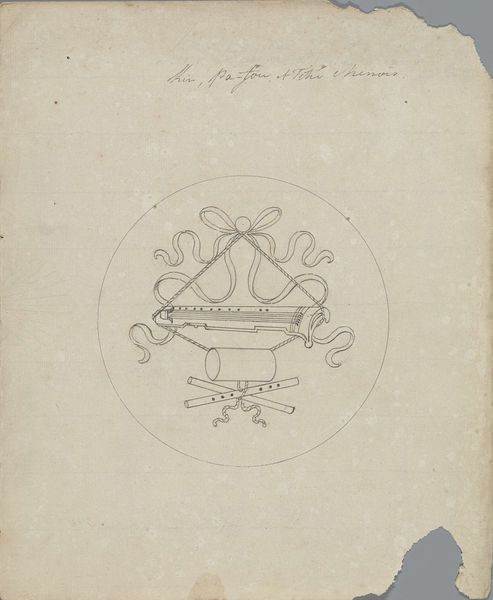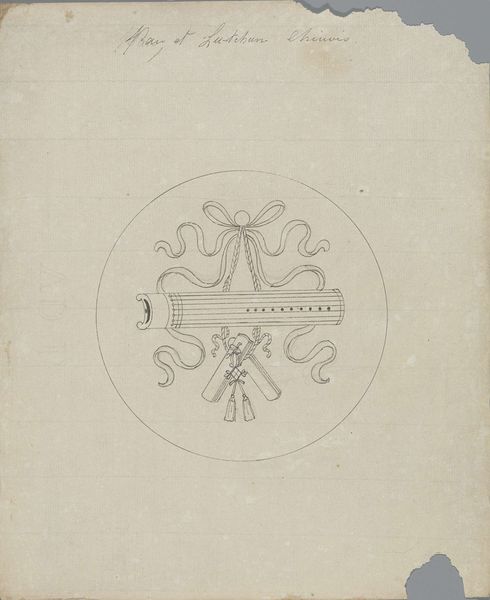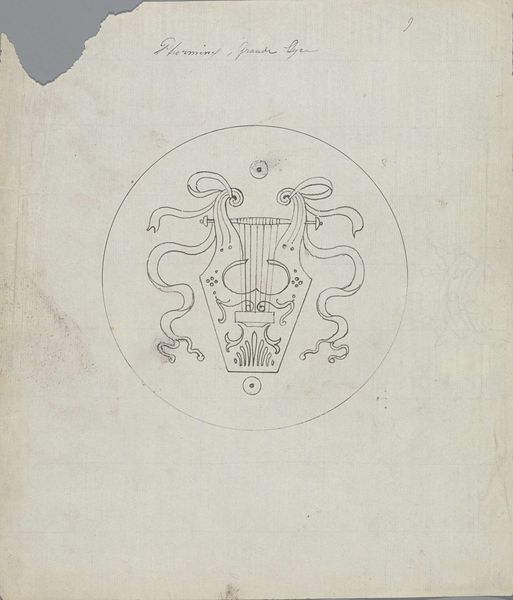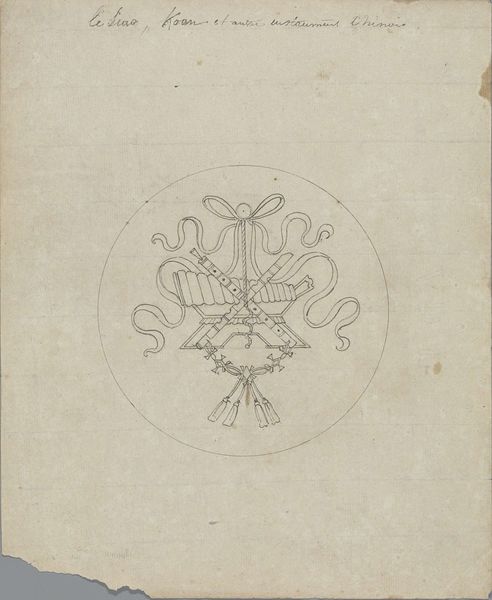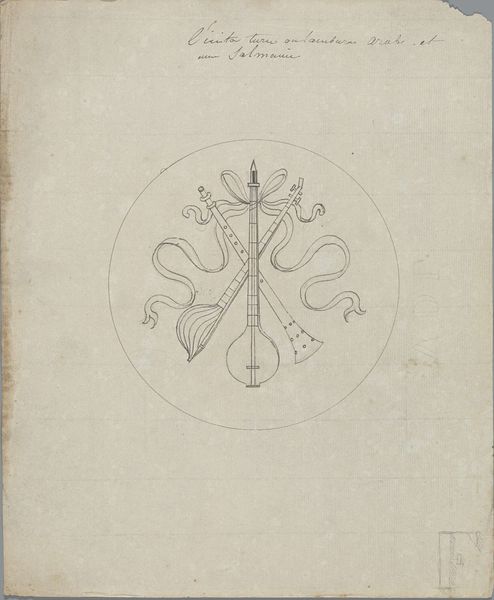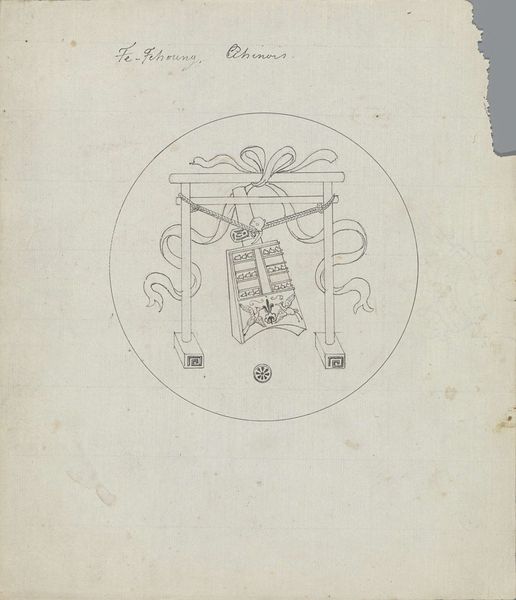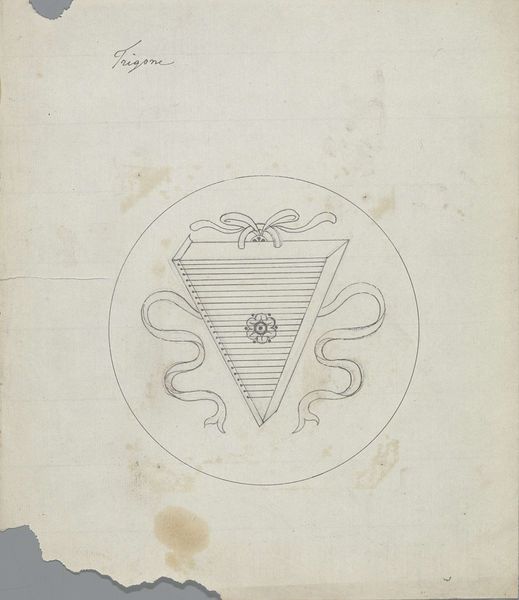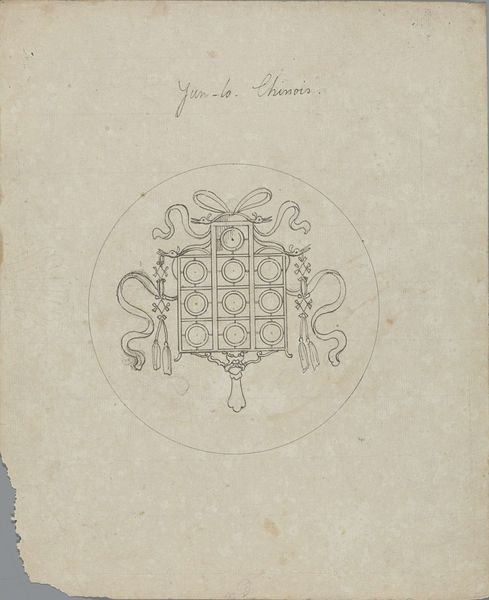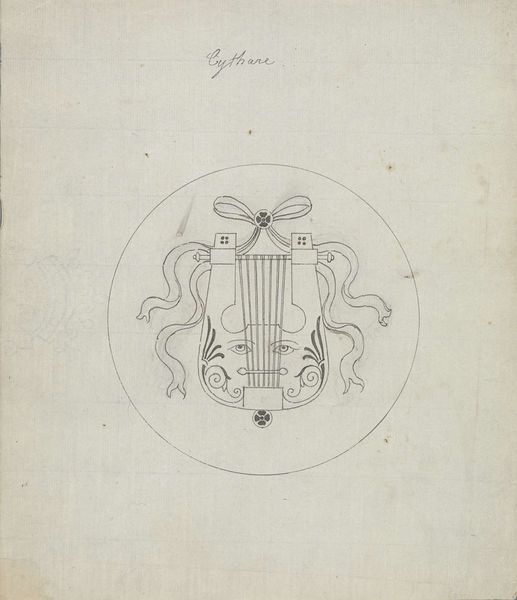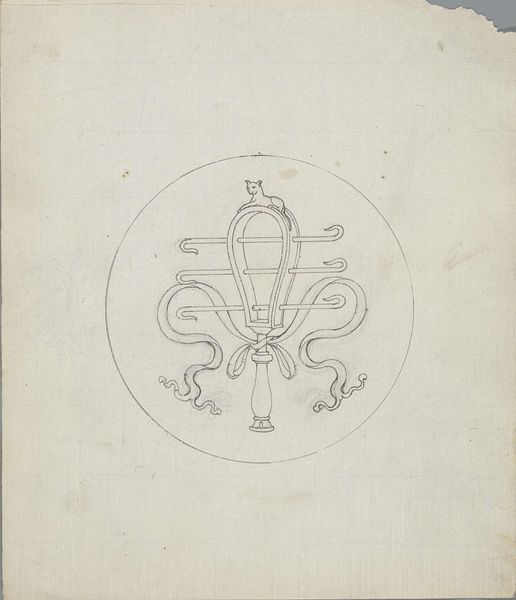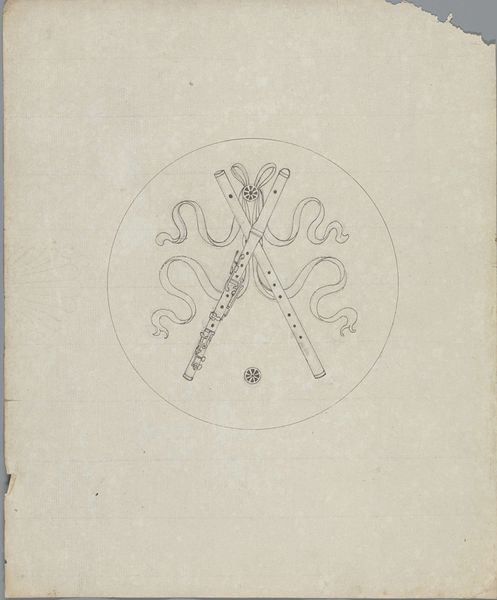
drawing, pencil
#
drawing
#
asian-art
#
geometric
#
pencil
#
orientalism
#
line
Dimensions: height 253 mm, width 208 mm, diameter 123 mm
Copyright: Rijks Museum: Open Domain
Editor: We're looking at "King Chinois," a pencil drawing made before 1828 by Pierre Félix van Doren. The first thing that struck me was its whimsical, almost childlike quality. What's your take on it? Curator: Ah, "King Chinois!" Isn't it just delightful? It speaks of a bygone era, of orientalism viewed through a Western lens. I see an intricate geometry softened by playful curves – the ribbons, the gentle sway of what looks like stylized lanterns. It makes me wonder, was van Doren attempting a faithful representation, or was he swept away by fantasy, creating his own Chinois dreamscape? Editor: A dreamscape is a good way to put it. But I wonder how to square the geometric forms with something as fluid as fantasy. Curator: Good point! Look at how carefully delineated everything is, as if van Doren were charting new territory. Maybe for him, order *was* fantasy – a controlled, Western gaze imposed upon an imagined Orient. That circular border, too, feels like framing, a way of containing the "exotic." What do you make of the details? Editor: The lanterns—or are they bells?—feel like they're gently clanging. The way the lines intersect, there is an element of depth despite its minimal rendering. But I'm curious, is there a king *here*, or is that merely a title? Curator: A wonderful question! Perhaps "king" represents not a ruler, but a *style*, a reigning aesthetic in vogue. Or maybe it is meant ironically. Consider how often the "Orient" was fetishized in Western art. There's a critical layer hiding beneath the aesthetic charm. Do you see it too? Editor: I think I am starting to. Thank you! It's like unpacking layers of cultural perception. Curator: Exactly! And that, my dear editor, is the enchanting, maddening, ultimately rewarding challenge of art history!
Comments
No comments
Be the first to comment and join the conversation on the ultimate creative platform.
